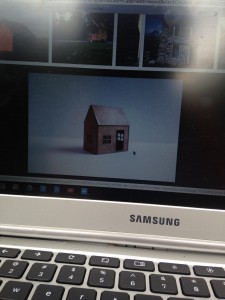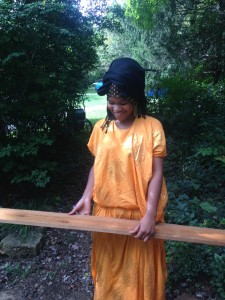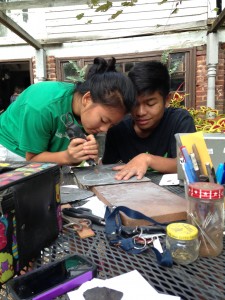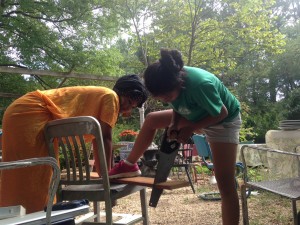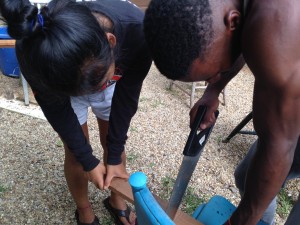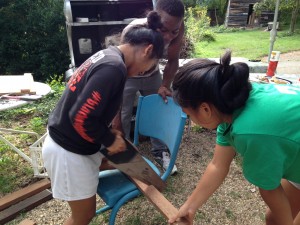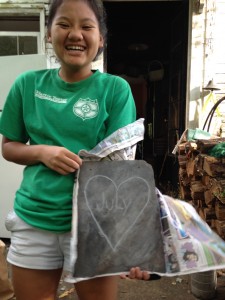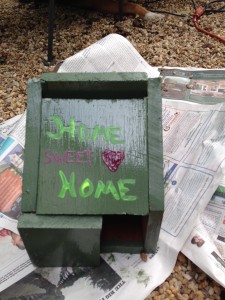Earlier this month we were lucky to get to share portions of the Computers4Kids curriculum at the Digital Media and Learning Badges competition. As I’ve mentioned, C4K didn’t win the money prize, but we were thrilled to be included. C4K offers training, one-on-one mentoring and college and career transition guidance to low-income youth in 7th-12th grades. With the exception of training, which has a clearly defined set of objectives, the C4K curriculum provides an intensely individualized program which accommodates the needs and interests of both our students, and our volunteer mentors. The challenge has been to provide a meaningful measure of what our students are achieving.
The DML Badges Competition asked organizations to create badge systems that validate out of school learning. We chose to present the college and career transition aspect of our program, Teen Tech. When students come to Teen Tech they focus on academic, job readiness, technology and/or service projects. As they attend over their high school years, their interests and needs change depending on school or family obligations, their age or other extra-curricular activities. Teen Tech’s curriculum needs to be flexible to accommodate our students’ changing priorities, however, our metrics need to capture what the students are learning so we can monitor their progress, uncover their challenges, and review the data to inform how we evolve the curriculum.
In this situation we can’t focus our measures on what content is being learned. On any given day, 10 students may be in the lab, working on such diverse tasks as Trig homework, mixing a new song, writing an English essay, practicing Photoshop in preparation to teaching a workshop.
All of this is why we do focus on broader, recognizable and valued skills. We work with students to fit their work into one of 5 learning domains and then map them onto ISTE-NETS for students. The table below demonstrates that alignment for some sample activities.
| Badge |
Tasks |
Selected Skills (ISTE-NETS) |
| Plan |
-Identify tasks and final goal
-Create timeline
-Adjust plan to reflect feedback from critique |
Critical Thinking, Problem Solving, and Decision Making
(Use critical thinking skills to plan and conduct research, manage projects, solve problems and make informed decisions using appropriate digital tools and resources.) |
| Learn & Apply |
-Identify and Perform 15 new technology skills in Adobe Dreamweaver |
Technology Operations and Concepts (Demonstrate a sound understanding of technology concepts, systems and operations.) |
| Create |
-Create, assemble and organize all components of your website, including images |
Creativity and Innovation (Demonstrate creative thinking, construct knowledge, and develop innovative products and processes using technology |
| Reflect & Revise |
-Perform self-evaluation before formal critique
-Participate in formal critique
-Revise products according to feedback received
-Write final summary of the project |
Critical Thinking, Problem Solving, and Decision Making |
| Present |
-Upload website
-Advertise it via social media |
Communication and Collaboration |
I think this kind of thought, investigation and analysis is what sets Computers4Kids apart and why the DML Badges Competition judges selected us out of a pool of 500 teams submitting content and frameworks. Multiple people have asked, how could they award such large institutions like Disney-Pixar, Microsoft and Intel in a competition intended for small non-profits? I’ve come to realize that the competition had nothing to do with awarding the most needy, or the smallest, or most efficient. We were competing toe-to-toe to demonstrate that we could reach the widest audience with international companies that have huge resources, instant name-recognition, and deep pockets of personnel. Our six employee organization got into the room with them and showed that we’ve got the goods as well.
